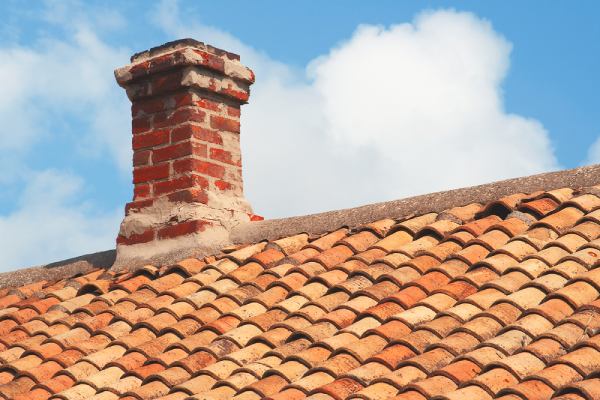Trickle Vents can be a helpful component in reducing condensation and improving indoor air quality. Generally, trickle vents are small openings in windows or walls that allow fresh air to enter while allowing moisture to escape. The purpose of this is to ensure that the air inside the house is constantly being circulated and is not stagnant. This circulation helps reduce condensation and prevents mould or mildew growth. It also helps with air quality, as fresh air can circulate throughout the house, reducing dust and other pollutants from collecting in one area.
Trickle vents are sometimes not enough to prevent condensation from occurring in a building, especially when airtightness is a concern. You can improve air ventilation with PIV unit (Positive Input Ventilation) or fight condensation with dehumidifer.
Why condensation is a big problem?
Condensation has become a worrying problem in many homes. Warm, damp air trapped inside your home can create condensation that builds up on windows and can be a leading cause of dampness, mould and mildew.
Going around and wiping away condensation from your windows each day is a thankless chore. Still, it may become necessary if you want to help prevent water from pooling on window sills or dripping down the walls below, creating growing damp patches over time.
Humid air and mould spores can affect people with breathing difficulties, and dampness and mildew can make clothes and soft furnishings feel damp and smell musty and stale. Many homes lack adequate air ventilation that allows air heavy with moisture to escape.
While heating your home can help to keep cold surfaces above the dew point where condensation forms, you still need good ventilation to help expel warm, damp air outside. Trickle vents are one solution that has been proven effective in allowing moist air to exit the home and reducing the risk of condensation formation.
What are trickle vents?
Trickle vents are simple devices fitted to the tops of window frames.
They provide a good source of air ventilation for the warm air that meets cold window surfaces and helps to reduce the level of condensation build-up.
Trickle vents allow the warm, humid air that rises upwards to escape outdoors, which is typically barred by double-glazed windows. Double glazing is excellent for retaining heat in the home to help reduce energy consumption and lower energy bills. However, it can also prevent air exchange that helps release moist, stagnant air from the home and prevent fresh air from entering the home.
Most modern double glazing now includes trickle vents as part of their design, but many homes still have older-style uPVC windows that lack this effective ventilation. If you are considering replacing your single-glazed or older-style double-glazing, it will be worth consulting with your window installer to ensure they use trickle vents in their products.
How do trickle vents work?
Fitting trickle vents will help to prevent condensation build-up that can lead to damp and mould growth. These vents can be manually opened and closed, so you don’t need to worry that all of your heated air will escape through permanently opened gaps in your double glazing.
When closed, trickle vents will prevent air from escaping from your home, but when open, they will only allow a small amount of air to escape – they won’t drain the room of warmth or cause a nasty draught that will make you shiver.
The vents allow for healthy air circulation, exchanging the warm, moist air trapped indoors for fresh outdoor air that isn’t heavy with moisture. These slimline-design vents can be fitted to your double-glazed doors and windows without obstructing them or making them difficult to open and close.
Can you fit trickle vents yourself?
Yes, you can buy and fit trickle vents yourself for your home. If you have a problem with condensation and your existing double glazing doesn’t have trickle vents included, you can easily fit them with the right tools and a bit of DIY knowledge.
Trickle vents should be fitted so they don’t obstruct the use of your windows or doors. This is a step-by-step guide on how to fit trickle vents into your double glazing:
- Measure and mark where the trickle vent will be fitted on the window or door frame
- Use an electric drill designed for use with uPVC to drill a vent hole on the mark
- Carefully fit the trickle vent over the hole you created in the frame
- Secure the trickle vent in place over the hole in the frame with screws
New building regulations concerning trickle vents
Because the Government introduced new building regulations on the 15th of June 2022 concerning new window installations, all new and replacement windows need to meet these regulations or will fail the FENSA inspection and, therefore, will not be eligible for a FENSA certificate. A FENSA certificate is your assurance that the installer who fitted your windows or doors has complied with Building Regulations.
The new building regulations aim to ensure adequate natural ventilation for homes, which is achieved through installing trickle vents. Because modern double glazing will increase the airtightness of your home, the new regulations will ensure that the ventilation in your home is no worse than it was before your new double glazing installation.
The health benefits of trickle vents
Allowing fresh air circulation through trickle vents will help combat condensation and reduce the health risks caused by damp and mould growth caused by poor home ventilation. Mould is associated with many health conditions.
According to the NHS, if you have dampness and mould in your home, you are more likely to have respiratory problems, respiratory infections, allergies or asthma. Damp and mould can also affect the immune system.
Those worse affected by dampness and mould in the home include:
- Babies and children
- Older people
- Those with a weakened immune system, such as those having chemotherapy
- Those with existing skin problems, such as atopic eczema
- Those with respiratory issues, such as allergies and asthma
These people should stay away from dampness and mould. Inhaling or touching mould spores may cause an allergic reaction, such as sneezing, a runny nose, red eyes and skin rash. Moulds can also cause asthma attacks.
Conclusion
The airflow in your home is better controlled with trickle vents, and the vents will allow fresh air in and damp air out to effectively eliminate condensation build-up on your double-glazed windows and doors.
By controlling your indoor airflow through trickle vents, you can remove moist air from your home and prevent the build-up of condensation that can lead to mould and mildew.
Trickle vents are slimline, discreet and easy on the eye, so you don’t need to compromise the style of your double glazing.







